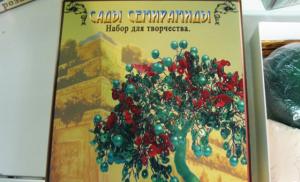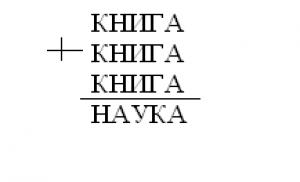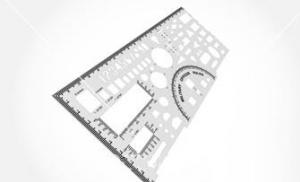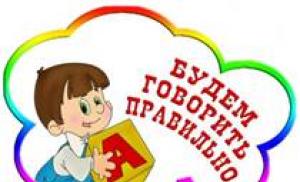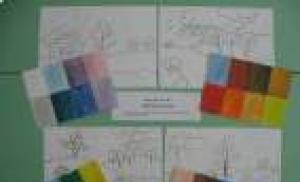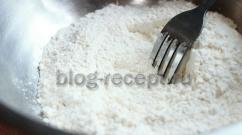Intersection and union of sets notation. Lesson "intersection and union of sets"
- Association or the sum of n sets A 1 , A 2 , …, A n is a set consisting of elements included in at least one of these n sets: A = A 1 U A 2 U… U A n where the sign U denotes the operation of combining sets.
Formally, the operation of union of sets is defined as follows:
A = (x / x ∈ A 1 ∨ x ∈ A 2 ∨ … ∨ x ∈ A n ),
where ∨ is a logical sign denoting the union OR. This entry is read as follows: the set A is all those values of x that belong to the set A 1, or the set A 2, or the set A 3, and so on up to the set A p.
To perform the operation union of sets there is a calculator .
for example, let sets be given: A 1 = (a, b, c); A2 = (4); A 3 = (b, 54). Applying the union operation to them, we obtain a new set A = A 1 U A 2 U A 3 = (a,b,c,4,54). Note that b ∈ A 1 and b ∈ A 3 , but the element b appears in the set A only once (recall: all elements of the set must be different).
On (), the union of sets is denoted by solid shading of the areas corresponding to these sets:
- On fig. 5 shaded area of the set Q U P ,
- On fig. 6 shows the region of the set (P U Q) U R with hatching.
- On fig. 7 shows three sets P, Q and R. Hatching marks the set Q U R.
The set union operation has the following properties:
a) the union is commutative:
A U B = B U A ;
A U B U C = A U C U B = B U A U C etc.;
b) union associatively:
(A U B) U C = A U (B U C) = A U B U C.
(Due to associativity, when writing several sets connected by a union sign, bracketsmay not be used) ;
in) if B ⊆ A or B ⊂ A, then A U B = A.
On fig. eight the Venn diagram is given for the case when B ⊂ A.
Hatching marks the area of the set A, which
simultaneously applies to the set A U B .
- From the "in" property it follows that:
- A U A = A ;
- A U A = ∅ ;
- A U I = I.
Exercises
1. Find the elements of the set A U B if
A = (a, b, c); B = (b, c, d).
2. Find the elements of the sets: first A, then - A 1 , after that - A 2 (order the numbers in ascending order), if A = (x / x ∈ I ∧ (x ∈ A 1 ∨ x ∈ A 2); A 1 ⊂ I is the set of multiples of three, A 2 ⊂ I is the setnumbers that are multiples of four); I = (1, 2, 3, 4, 5, 6, 7, 8).
3. Given three sets A, B, C. It is known that a ∈ A. Indicate all true statements:
a) a ⊂ B; f) (a) ∈ B;
b) a ∈ A U B ; g) (a)⊆ A U B ;
c) a ⊂ B U C ; h) (a) ∈ B U C ;
d) a ∈ A U B U C; i) (a)⊆ A U B U C
e) (a) ⊆ A
Answers: b), d), e), g), i) - true.
4. In fig. 9 shows a Venn diagram for three sets. Find the elements of the sets A U B , then - A U C.
5. List the elements of the set M (Fig. 9):
M = (x / x ∉ A ∧ x ∈ I).
6. List the elements of the set N (Fig. 9):
N = (x / x ∈ A U B , x > 4).
7. List the elements of the set K if
K = (x / x ∈ A U B U C , x is an even number ) (Fig. 9).
8. List the elements of the set T (Fig. 9):
T = (x / x ∉ A U C, x ∈ I ).
9. Find the cardinal number of the set A U B ,
if A = (a, b, c); B = (6, 7, 8, 9).
Answer: | A U B| = 7
10. Find cardinal numbers of sets
A U B, A U C, B U C according to the Venn diagram (Fig. 10).
11. Find the cardinal number of the set A U B if
A = (1, 2, 3, 4); B = (2, 3, 4, 5).
Answer: | A U B| = 5
12. Find the cardinal number of the set A U B if A = (∅); B = (a, b, c).
Answer: | A U B| = 4
13. Find the cardinal number of the set B(P) U B(Q), where
P = ( a, b, c ); Q = (b, c, d).
Answer: |B(P) U B(Q)| = |B(P U Q)| = |B(a, b, c, d)| = 2 4 = 16
14. Find the cardinal number of the set B(K) U B(M), where
K = ( x / x is an even natural number, x ≤ 8);
M = ( x / x is an odd natural number, x< 6}.
15. How many proper subsets does the set have, A = A 1 U A 2 U… U A n ,
if A 1 , A 2 ,…, A n —singletons that are pairwise unequal?
An operation on sets is a rule, as a result of which, from given sets, some new set is uniquely obtained.
Denote an arbitrary operation by *. The set obtained from the given sets A and B written in the form A*B. The resulting set and the operation itself are called one term.
Comment. For basic numerical operations, two terms are used: one designates the operation itself as an action, the other - the number obtained after the action is performed. For example, the operation denoted by + is called addition, and the number obtained as a result of addition is called the sum of numbers. Similarly, the sign of the multiplication operation, and the result and b - product of numbers a and b. However, less often this difference is not taken into account and they say “Consider the sum of numbers”, meaning not a specific result, but the operation itself.
crossing operation.The intersection of sets A and B AglV, consisting of all objects, each of which belongs to both sets BUT and AT simultaneously.
In other words, ASV - is the set of all r such that heA and hew:
union operation.Union of sets A and B is called the set denoted A "and B, consisting of all objects, each of which belongs to at least one set BUT or AT.
The union operation is sometimes denoted by a + sign and is called set addition.
Difference operations.The difference of sets A and B is called the set denoted AB, consisting of all objects, each of which lies in BUT, but not lying AT.
Expression apv read "BUT in intersection with AT», AkjB- "And in conjunction with B", AB - "A without AT".
Example 7.1.1. Let be BUT = {1, 3,4, 5, 8,9}, AT = {2,4, 6, 8}.
Then AkjB= (1,2, 3,4, 5, 6, 8, 9), AcB=( 4,8}, AB= (1.3, 5, 9), YL = (2.6)."
Based on these operations, two more important operations can be defined.
addition operation. Let be AqS. Then the difference SA called complementing the set A to S and denoted A s .
Let any set under consideration be a subset of some set U. Complement to such a fixed (in the context of solving a particular problem) set U denote simply BUT. The designations are also used SA, with A, A".
Example 7.1.2. The complement of the set (1, 3,4, 5, 8, 9) to the set of all decimal digits is (0, 2, 6, 7).
Complement of the set Q to the set R there are many 1.
The complement of a set of squares to a set of rectangles is the set of all rectangles with unequal adjacent sides.
We see that the operations of union, intersection and addition of sets correspond to the logical operations of disjunction, conjunction and negation.
Symmetric difference operation.Symmetric difference of sets A and B is called the set denoted A®B, consisting of all objects, each of which belongs to exactly one of the sets A and B:
It is easy to see that the symmetric difference is the union of two sets AB and VA. The same set can be obtained by first combining the sets BUT and AT, and then remove common elements from the set.
Example 7.1.3. Let real numbers be given and Then for the corresponding numerical intervals we have:

Note that since the segment [a; b] contains a number c> and the interval (c; d) point with does not contain the number with lies in difference [a; b] without [with; cf. But the difference, for example, (2; 5), does not contain the number 3, since it lies in the segment. We have (2;5)=(2;3).
Let there be given disjoint sets BUT and AT. Since n is the sign of the intersection operation, the notation A(bB incorrect. It is also incorrect to say that sets have no intersection. The intersection is always there, it is defined for any sets. The fact that the sets do not intersect means that their intersection is empty (that is, by performing the specified operation, we get an empty set). If the sets intersect, then their intersection is not empty. We conclude:
Let us generalize the intersection union operations to the case when there are more than two sets.
Let the system To sets. The intersection of the sets of a given system is the set of all elements, each of which lies in all sets of their TO.
The union of sets of a given system is the set of all elements, each of which lies in at least one set of them. TO.
Let the sets of the system To are numbered by elements of some family of indices /. Then any set of To can be designated BUT,-, where iel. If the collection is finite, then the set of first natural numbers (1,2,...,u) is used as /. In general, / can be infinite.
Then, in the general case, the union of sets BUT for all iel denote (J BUT( , and the intersection -f]A i .
Let the set To final, then K= In this case
write AyjA 2 v...KjA„ and AG4 2 (^---G4p-
Example 7.1.4. Consider the intervals of the number line A| \u003d [-oo; 2], L 2 \u003d H °; 3], L 3 =)
